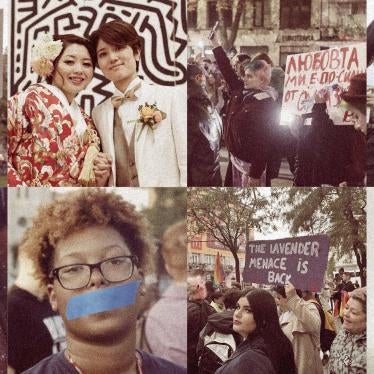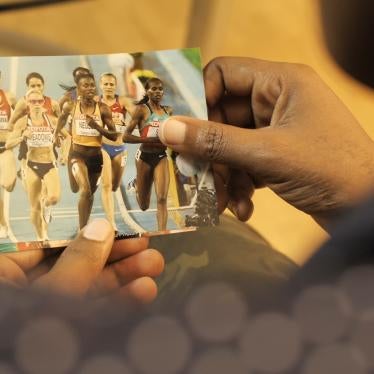(Manila) – The Philippine government built a fence that prevents participants to the Asian Development Bank’s (ADB) annual meeting in Manila from seeing a slum, Human Rights Watch said today. Some of the poor families hidden from view are beneficiaries of apoverty reduction program financed by the bank.
“By blocking off struggling families behind a fence, the Philippine government is sending the message that dire poverty can just be ignored,” said Jessica Evans, senior international financial institution advocate at Human Rights Watch. “Instead of trying to hide the poor, the Philippine government should be pressing the bank to tackle poverty head on.”
Over 4,000 delegates have gathered in Manila for the bank’s 45th annual meeting of its board of governors, from May 2 to 5, 2012. The meeting brings together ministers of finance and development, central bankers, private sector representatives, civil society activists, and journalists to discuss a broad range of issues linked to the ADB’s mission to reduce poverty.
In April, the Philippine government built a fence on the bridge along the highway that runs from the Ninoy Aquino International Airport to the convention center, where the meeting is being held. Draped over the fence are tarps with signs promoting tourism in the Philippines as well as the ADB meeting.
The Aquino government defended its decision to build the fence. The president’s press secretary, Ramon Carandang, said that, “Any country will do a little fixing up before a guest comes,” according to the Associated Press (AP).
Francis Tolentino, chairman of the Metropolitan Manila Development Authority, which built the fence, told the AP that the government needs to show that Metro Manila is orderly. “I see nothing wrong with beautifying our surroundings,” he said. “We are not trying to keep the poor out of the picture.”
But residents of the slum area expressed concern that the fence was intended to hide their plight. An elderly man who lives with his family under the bridge told Human Rights Watch, “They don’t want the tourists to see the dirty water and shanties here.”
A mother of four, “Laila” (not her real name) said: “The fence covers up the squatters as [the government] doesn’t want tourists to see the poverty here. We don’t complain as we are scared they could demolish our homes.” She said that a local government official had approached her on May 1 and told her that she and her family should stay under the bridge rather than loitering near the highway as it was “very embarrassing” having her and her family visible from the street.
The ADB states that it “aims for an Asia and Pacific free from poverty.”Some of the families in the blocked-off area are part of an ADB-funded conditional cash transfer program, receiving about US$31 a month from the government, provided their children regularly attend school and go to a local health clinic. This program “helps us make ends meet,” one mother living under the bridge, told Human Rights Watch.
Laila, who begs along the highway where the fence was built, said she was interviewed by the Department of Social Welfare and Development to determine her eligibility for the program, but had not heard from the department nor received any assistance under the program. While the government has created a grievance redress mechanism to enable people to complain about wrongful exclusion from the program, Laila had not heard of this process.
“The theme of the Asian Development Bank’s annual meeting is the importance of inclusive growth,” Evans said. “But the very poor, as this incident shows, have been shunted out of sight. Let’s hope that they are not shunted out of mind.”







